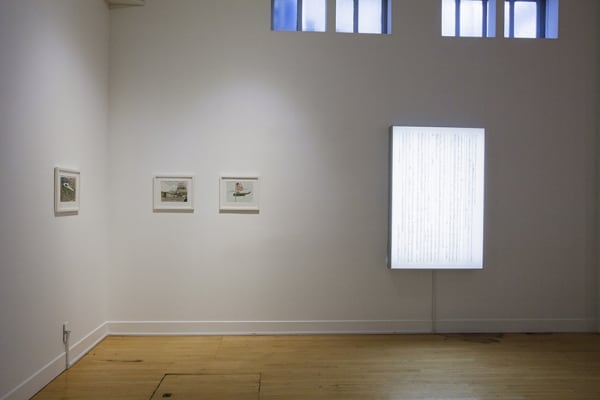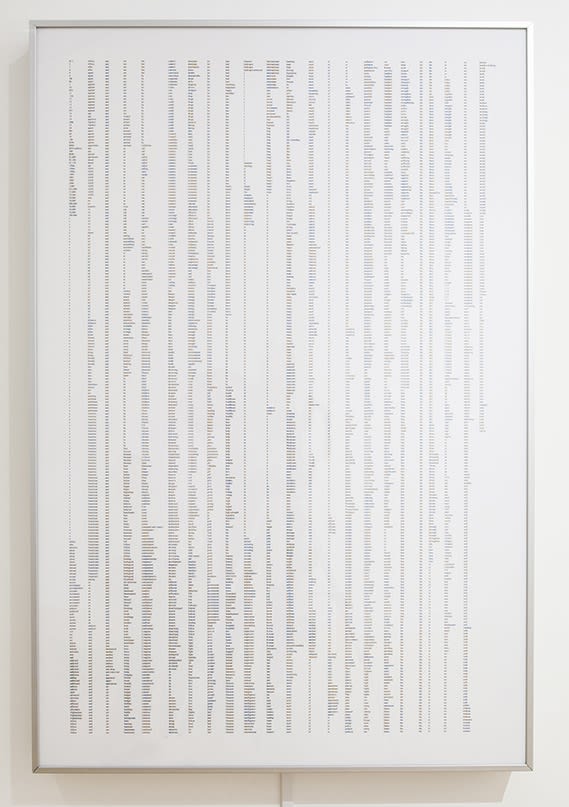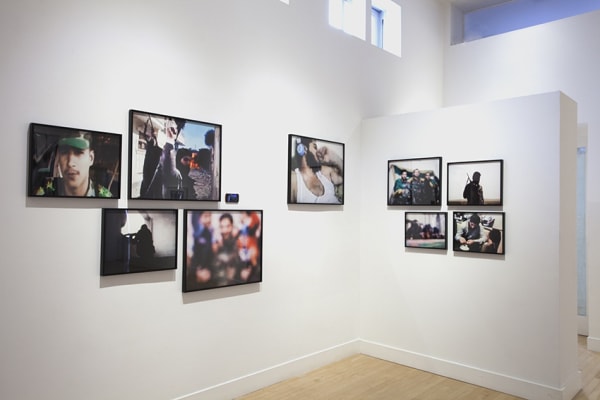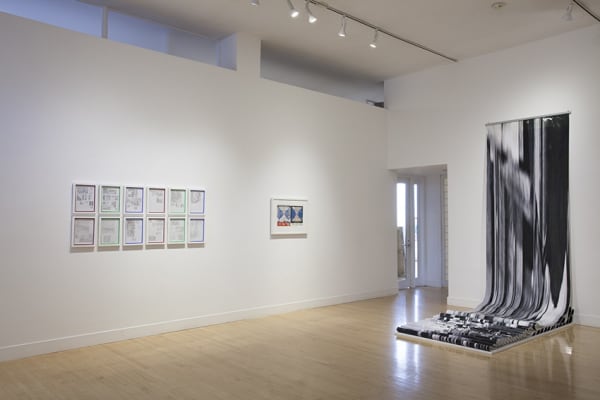Political Fictions
Bringing together an international group of artists whose diverse practices question the reportage and representation of current events, Political Fictions starts from the position that both artists and audiences can be active participants in the production, interpretation and transformation of media culture. By creatively intervening in the flow of news photos, television broadcasts and streaming data, these artists coax familiar images into revealing latent content. The exhibition takes its name from Joan Didion’s 2001 collection of essays on American politics, which focuses on how the electoral process is packaged for the public consumption. Political Fictions brings the gallery’s represented artists into dialogue with established and emerging artists from outside the gallery’s regular program to address shared interests and urgencies.
KOTA EZAWA | The Simpson Verdict, 2002
The work of Kota Ezawa (b. 1969 Cologne; lives and works in San Francisco, California) often explores the role of television, film and photography in shaping our relationship to reality in an age of spectacularized media events. In his video The Simpson Verdict, Ezawa animatesthe original courtroom footage of the verdict being read at the conclusion of the 1994 O.J. Simpson murder trial, distilling it to a pared down, flattened animation style that has become his signature. The facial expressions and body language of Simpson — as well as the responses of the victims’ families and others in the courtroom — become the central element of the piece. Setting these cartoonish figures against a disjunctive, unaltered audio track of bureaucratic legalese, Ezawa intensifies the impact of the human gestures, drawing attention to Simpson’s shifting eyes and blank expression as the verdict is read.
TODD LAVINE | Selections from A Transmission, Interrupted, 2014
Social media plays a role in both the framing and waging of armed conflicts such as the Syrian Civil War, which has been growing in intensity for more than two years. In Selections from A Transmission, Interrupted, Todd Lavine (b. 1989, New York; lives and works in Menlo Park, California) examines online depictions of one key figure, Lieutenant Abdul Razzaq Tlass. Tlass was the top leader of the Farouq Brigade — an armed rebel organization of the Free Syrian Army — until he was connected to a cybersex scandal posted on YouTube. Tracing the arc of his rise and fall via Lavine’s carefully selected and edited images and video footage — ranging from staged photographs and stills from a hacked Skype video to news broadcasts, all circulating online — we experience Tlass as a mosaic of conflicting constructions that never quite adds up.
TAHA BELAL | untitled (pictures backwards), 2014
In his latest body of work, Taha Belal (b. 1984, Cairo; lives and works in Cairo, Egypt) draws surprising insights from the transformation of images as they travel between various news formats. With untitled (pictures backwards), Belal works with a Cairo newspaper’s coverage of the weeks leading up to the Egyptian presidential elections, examining how this highly politicized moment was transformed into “news” for a two-dimensional platform. As if attempting to reverse-engineer the original photographs from their diminished state — reproduced on cheap newsprint in the service of a propaganda machine — Belal’s process-oriented practice becomes a metaphor for the activity of the engaged viewer
JEANNE FRISCIA | Wall (2003), 2003/2014
For her text-based installation, Wall (2003), Jeanne Friscia (b. 1964, New Jersey; lives and works in San Francisco, California) has reworked the text from George W. Bush’s 2003 State of the Union address — an object lesson in fear mongering in the wake of the 9/11 — alphabetizing all of the President’s words and arranging them into columns that glow from the surface of light box. Creating Wall (2003) inspired Friscia to revisit and rearrange all eight of Bush’s State of the Union Addresses. The work’s implications extend beyond the political immediacy of its source, pointing to how alternative readings of dominant media can be productive and revealing.
ALFREDO JAAR | From Time to Time, 2006
Since the early 1980s, Alfredo Jaar (b. 1956, Santiago, Chile; lives and works in New York) creates artworks that re-engage desensitized audiences with global inequities and explore the limitations of art in representing events such as genocides, epidemics and famine. Consisting of nine Time magazine covers, From Time to Time analyzes the visual clichés about Africa disseminated by this highly popular news outlet. As the artist has remarked, “Images are not innocent. Every single image out there in the world represents…an ideological conception of the world.”
DINH Q. LÊ | The Scroll of General Nguyen Ngoc Loan, 2013
To create this 150-foot scroll of rippling photo paper, Vietnamese-based artist Dinh Q. Lê (b. 1965, Hà Tiên, Vietnam; lives and works in Ho Chi Minh City) appropriated Eddie Adams’s well-known photograph of police chief General Nguyen Ngoc Loan’s public execution of a Vietcong prisoner—digitally stretching the image so that it spans the work’s entire length. It was Adam’s photograph, coupled with unprecedented access to televised coverage from the frontlines, that helped to galvanize American public opinion against the Vietnamese-American War. Testing the limits of legibility, the scroll is remarkable for its ability to call to mind the Adams’ image, despite the distorting effects of Lê’s artistic process.











